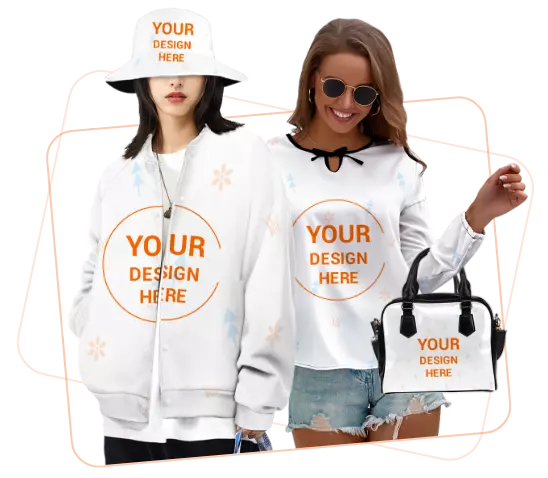
How to Launch a Successful Clothing Brand
Anyone can start a clothing brand, but building one that lasts takes a smart plan. In today's digital world, launching online is your ticket to reaching customers everywhere.
This guide will walk you through everything you need to know to build your apparel brand from the ground up, from choosing a business model to marketing your first collection.
Page overview:
First, Pick Your Business Model
Your 8-Step Guide to Launching a Clothing Brand
Step 1: Define Your Niche and Audience
Step 2: Create a Solid Business Plan
Step 3: Develop Your "Eye for Fashion"
Step 4: Build Your Brand Identity
Step 5: Design Your First Products
Step 6: Choose Your Production Method
First, Pick Your Business Model
One of your first big decisions is choosing how you'll run your business. Each approach has its own pros and cons, so pick the one that best fits your budget and vision.
Print on Demand
You partner with a supplier who prints and ships your designs only when an order is placed. This means no upfront inventory costs.
Dropshipping
Similar to POD, you sell clothing that is manufactured, stored, and shipped by a third-party partner. You never handle the products yourself.
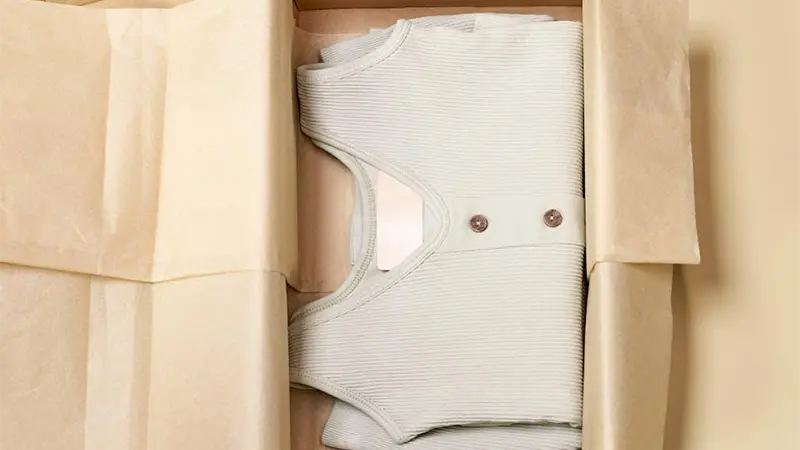
Private-Label Manufacturing
You choose from a manufacturer's existing clothing templates and add your own branding, like logos and tags.
Custom Cut and Sew
You design your garments from scratch and work closely with a manufacturer to create completely unique products.
| Business Model | Pros | Cons |
|---|---|---|
| Print on Demand | Low start-up costs, no need for inventory, and the ability to test various designs. | Limited customization options and lower profit margins due to production and shipping fees. |
| Dropshipping | Low upfront investment, a wide product range, and no warehousing concerns. | No control over quality, potential shipping delays. |
| Private-Label Manufacturing | Builds brand identity, consistent quality. | Higher initial costs, minimum order quantities (MOQs). |
| Custom Cut and Sew | Complete creative control, premium and unique products. | High investment, long production times, requires design skill. |
What's the Startup Cost?
Your initial investment will depend entirely on the business model you choose.
Print on Demand (POD)
This is the most budget-friendly option. With no inventory costs, your main expenses are website setup, design, and marketing. You can get started for around $500 – $1,000, but expect lower profit margins per item.
Wholesale/Private-Label
This involves buying pre-made clothing in bulk to customize with your brand. Expect to invest between $2,000 and $10,000+ to start. You'll have better margins but also face storage costs and the risk of unsold stock.
Making Your Own (Cut and Sew)
Creating your own line from scratch is the most expensive route, costing anywhere from $5,000 to $20,000+. This gives you full creative freedom but requires a significant investment in design, fabric, and production.
Your 8-Step Guide to Launching a Clothing Brand
Ready to get started? Follow these eight strategic steps to bring your brand to life.
Step 1: Define Your Niche and Audience
You can't sell to everyone. A focused brand attracts a loyal community. Start by choosing a niche that you're passionate about, such as sustainability, music, hobbies, or social causes.
Then, get to know your ideal customer by asking:
- What's their budget? Are you targeting luxury, mid-range, or budget-friendly shoppers?
- What are their values and interests? This insight will shape your branding and marketing.
- What problem are you solving? Maybe you're offering inclusive sizing, eco-friendly materials, or unique designs they can't find elsewhere.
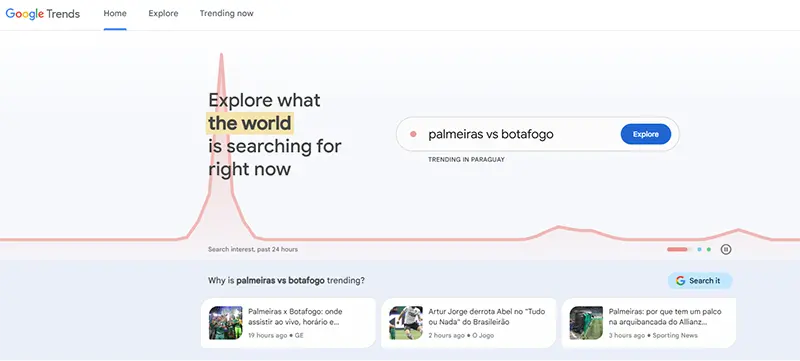
Step 2: Create a Solid Business Plan
Your business plan is your roadmap. It doesn't have to be complicated, but it should cover the essentials.
- Executive Summary: A brief overview of your brand's mission, goals, and what makes you unique.
- Business Structure: Will you be a sole proprietorship, a partnership, or an LLC?
- Unique Selling Points (USPs): What makes you different from the competition? Is it your designs, your quality, or your brand story?
- Financial Plan: Outline your startup costs, production expenses, and pricing strategy.
- Market & Competitor Analysis: Research your industry to understand trends and identify what your competitors are doing right (and wrong).

Step 3: Develop Your "Eye for Fashion"
To succeed, you need to immerse yourself in the world of fashion.
- Follow fashion blogs, influencers, and brands in your niche on Instagram, Pinterest, and TikTok.
- Pay attention to both high-fashion runway shows and everyday street style to see how trends are born and adapted.
- Learn about fashion history and iconic designers to understand the principles of timeless style.
Step 4: Build Your Brand Identity
Your brand is more than just a logo—it's the feeling you want to evoke.
- Define Your Brand: What are your core values? Sustainability? Inclusivity? Bold creativity?
- Choose a Name: Pick something memorable, easy to say, and that reflects your brand's personality.
- Check Domain Availability: Make sure the website domain and social media handles are available for your chosen name.
- Stay Consistent: Use the same logo, colors, fonts, and tone of voice across your website, social media, and packaging to build a strong, recognizable brand.
Step 5: Design Your First Products
This is where your vision becomes reality. Every piece should reflect your brand's identity and appeal to your target audience.
- Focus on Details: Pay attention to stitching, print quality, buttons, and materials. These small details elevate your products.
- Use Design Tools: Software like Adobe Illustrator or Procreate can help you sketch ideas and experiment with colors and patterns digitally.
- Always Order Samples: Before committing to a full production run or listing a POD product, order samples to check the quality of the garment, printing, and overall feel.
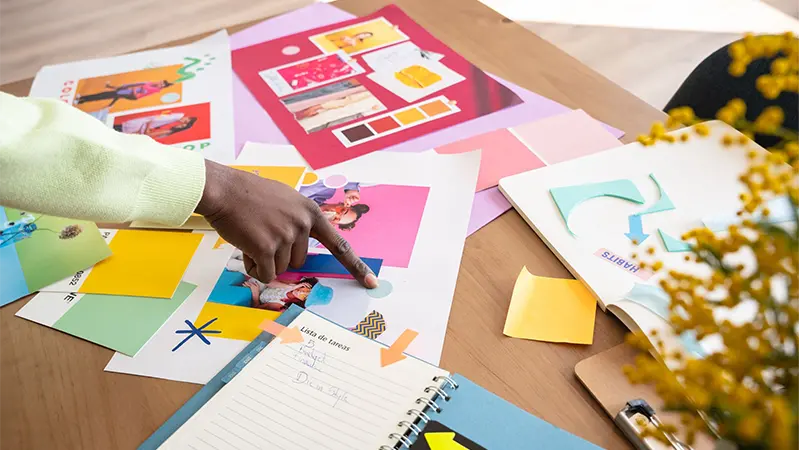
Step 6: Choose Your Production Method
Now it's time to decide how your clothes will be made.
- Finding a Manufacturer (for Private-Label or Cut & Sew): Research manufacturers online or at trade shows. Be sure to check their Minimum Order Quantities (MOQs), request samples, and negotiate pricing and lead times.
- Working with Print on Demand (POD): If you want to avoid inventory, POD is a great choice. Research different POD suppliers to compare their product catalogs, print quality, and shipping times.
Step 7: Build Your Online Store
Your online store is your digital storefront.
- Create Your Own Website: Platforms like Shopify or Squarespace make it easy to build a beautiful, functional store. Buy a domain name, choose a mobile-friendly theme, and set up secure payment options.
- Sell on Marketplaces: Platforms like Etsy or Amazon have a built-in audience, making them great places to find your first customers. Optimize your listings with high-quality photos, detailed descriptions, and relevant keywords.

Step 8: Market Your Brand
Once your store is live, you need to get the word out.
- Use Social Media: Instagram and TikTok are perfect for fashion brands. Share high-quality product photos, behind-the-scenes content, and engage with your followers.
- Run Targeted Ads: Use Facebook and Instagram ads to reach your ideal customers based on their demographics and interests.
- Leverage Content Marketing: Start a blog with styling tips or create videos to attract organic traffic and establish your expertise.
- Work with Influencers: Partner with influencers whose audience aligns with your brand for authentic promotion.
- Utilize Email Marketing: Build an email list to share exclusive offers, announce new arrivals, and encourage repeat purchases.
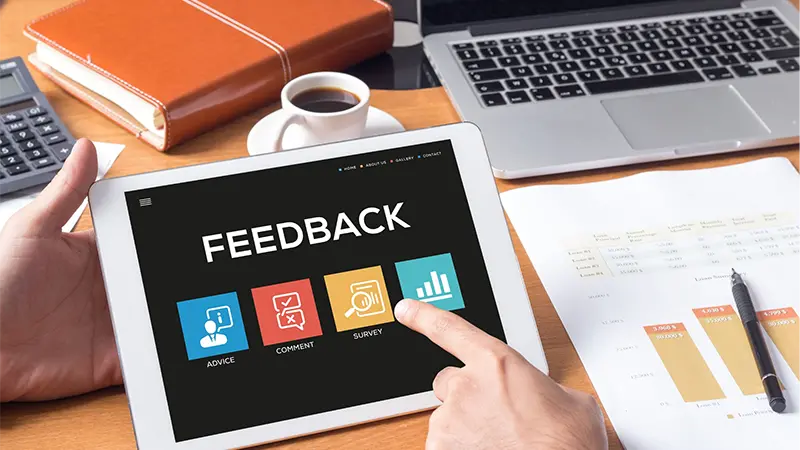
Ready to Launch Your Clothing Brand?
Starting a clothing brand is a journey that requires creativity, strategy, and passion. By starting small, focusing on your niche, and consistently connecting with your audience, you can build a brand that not only sells clothes but also creates a loyal community.



